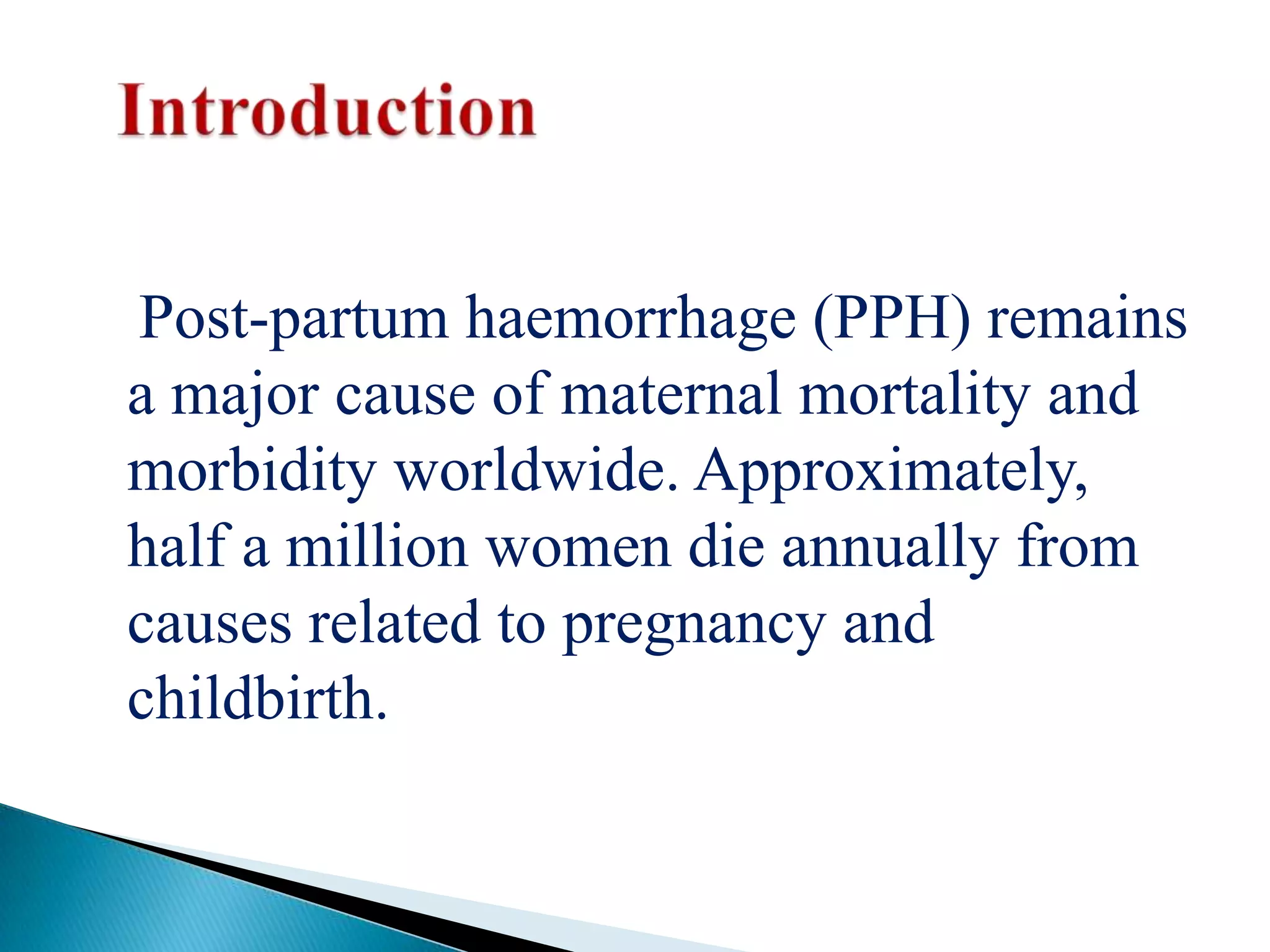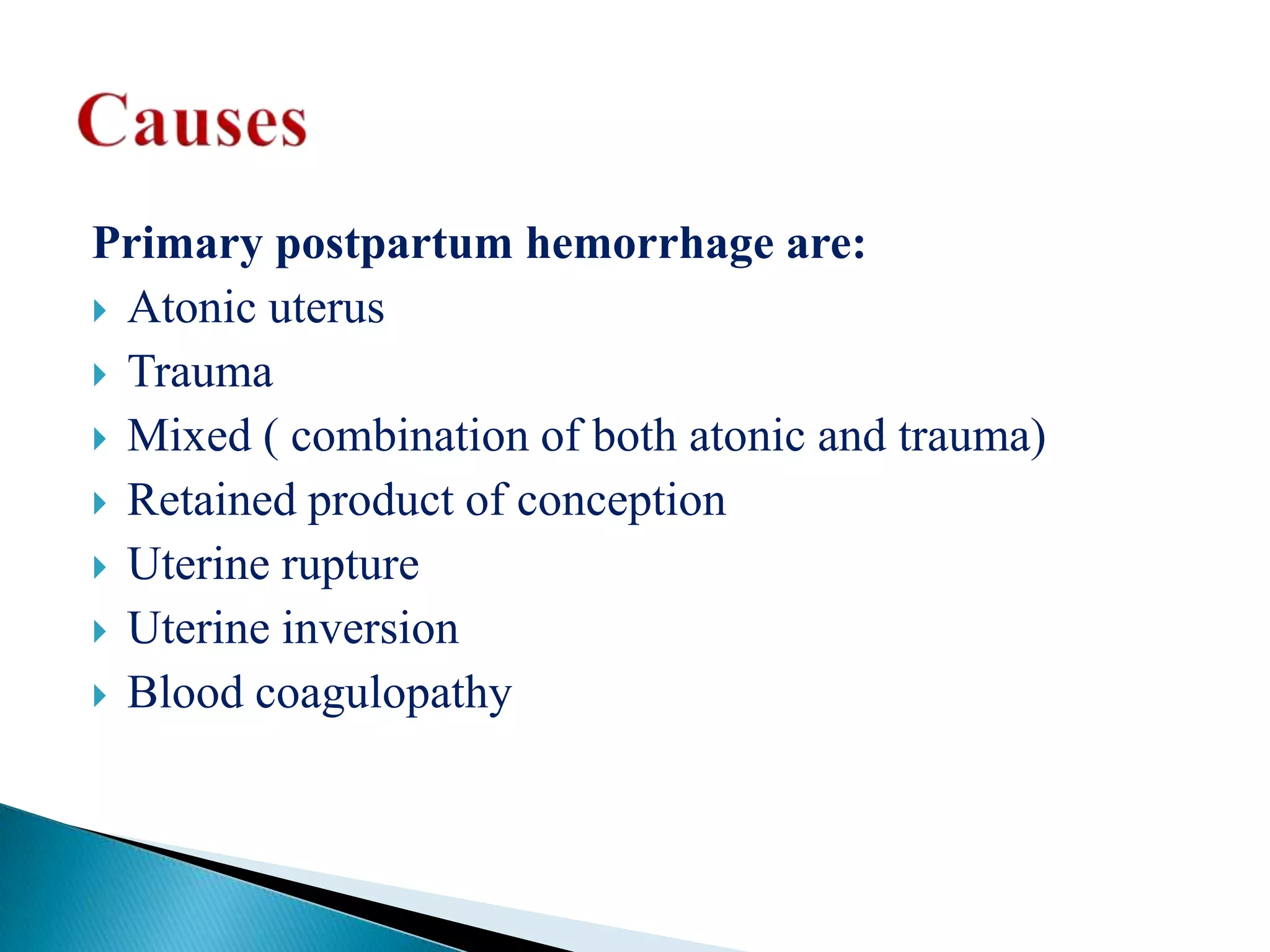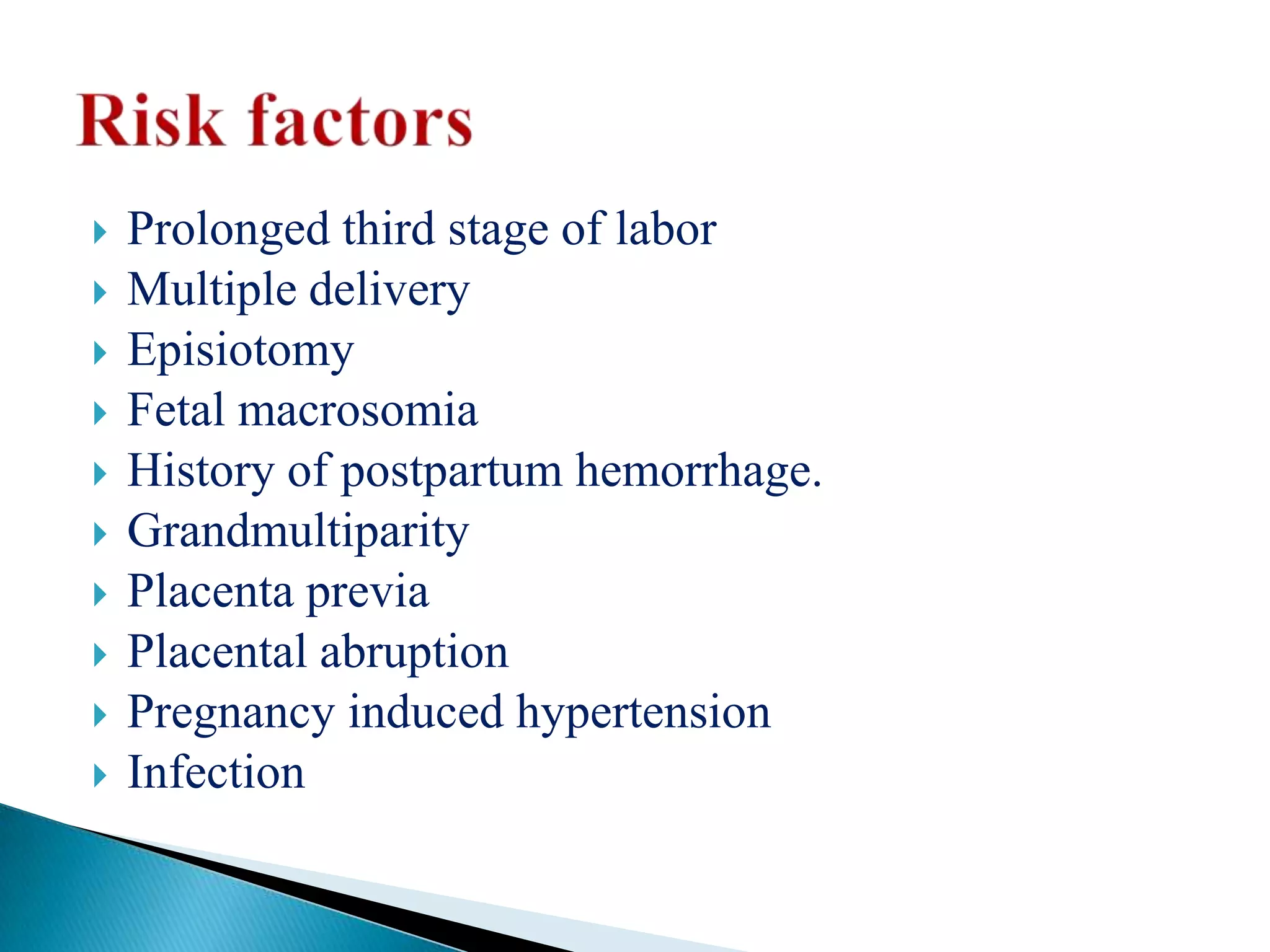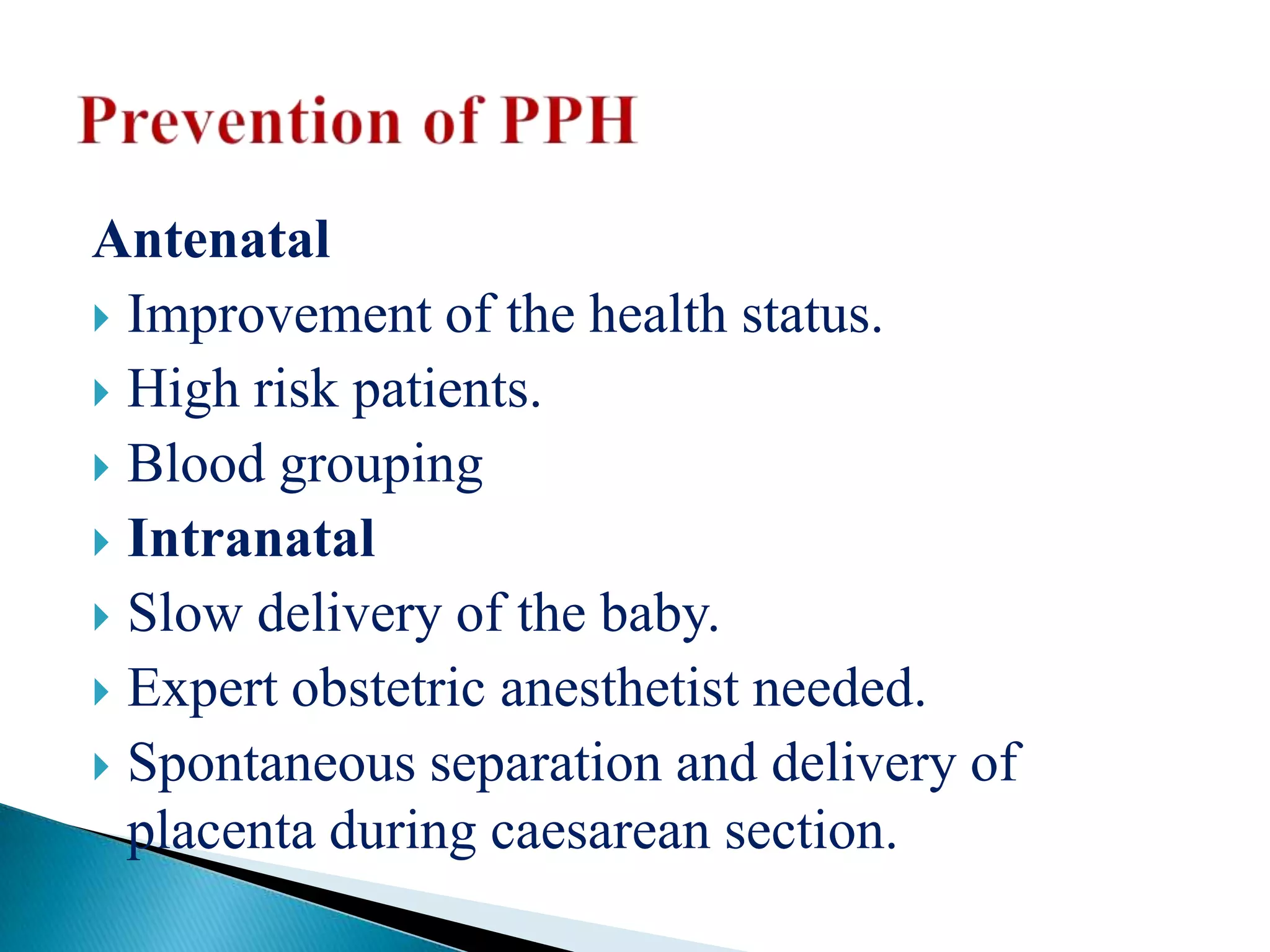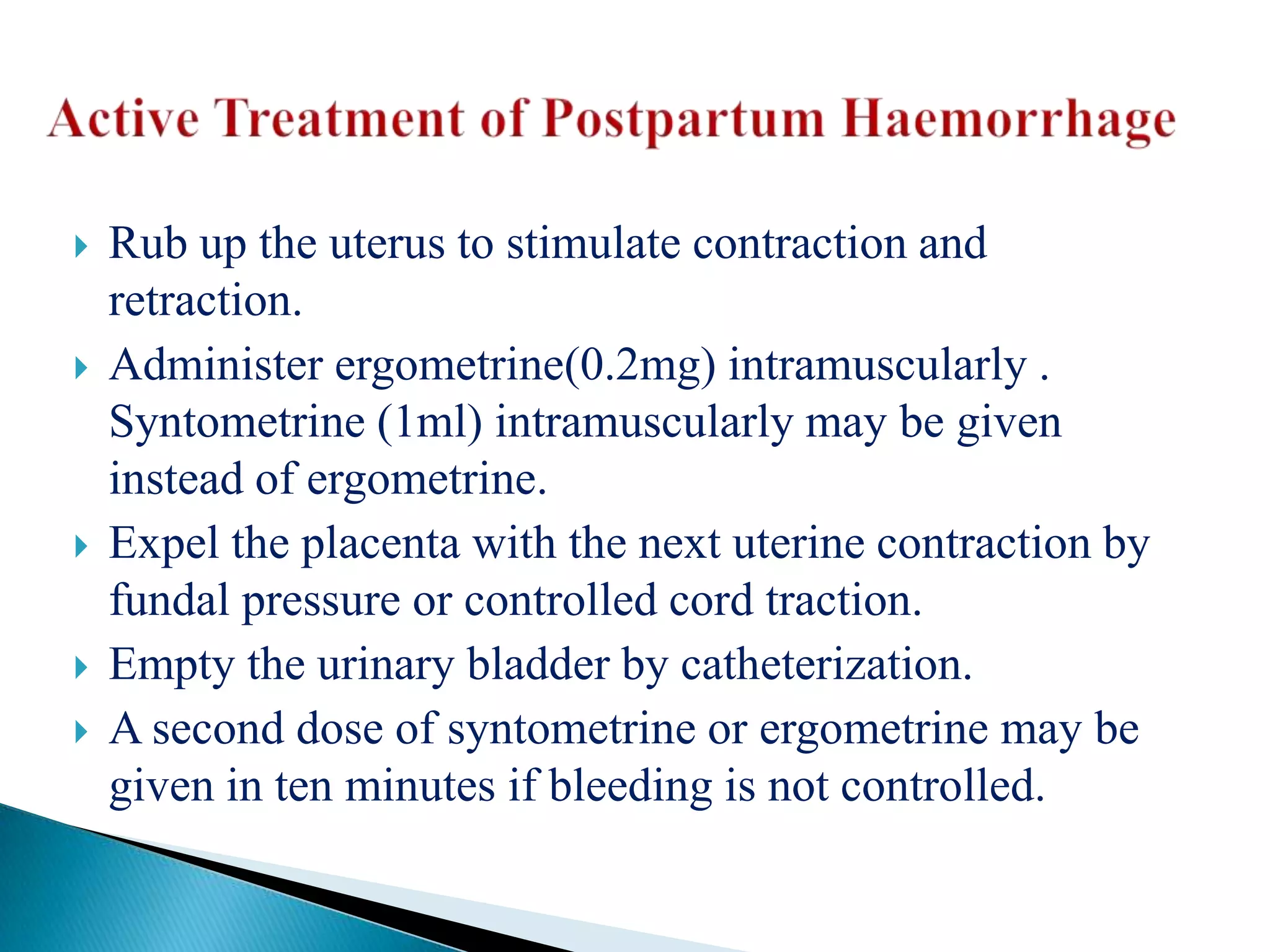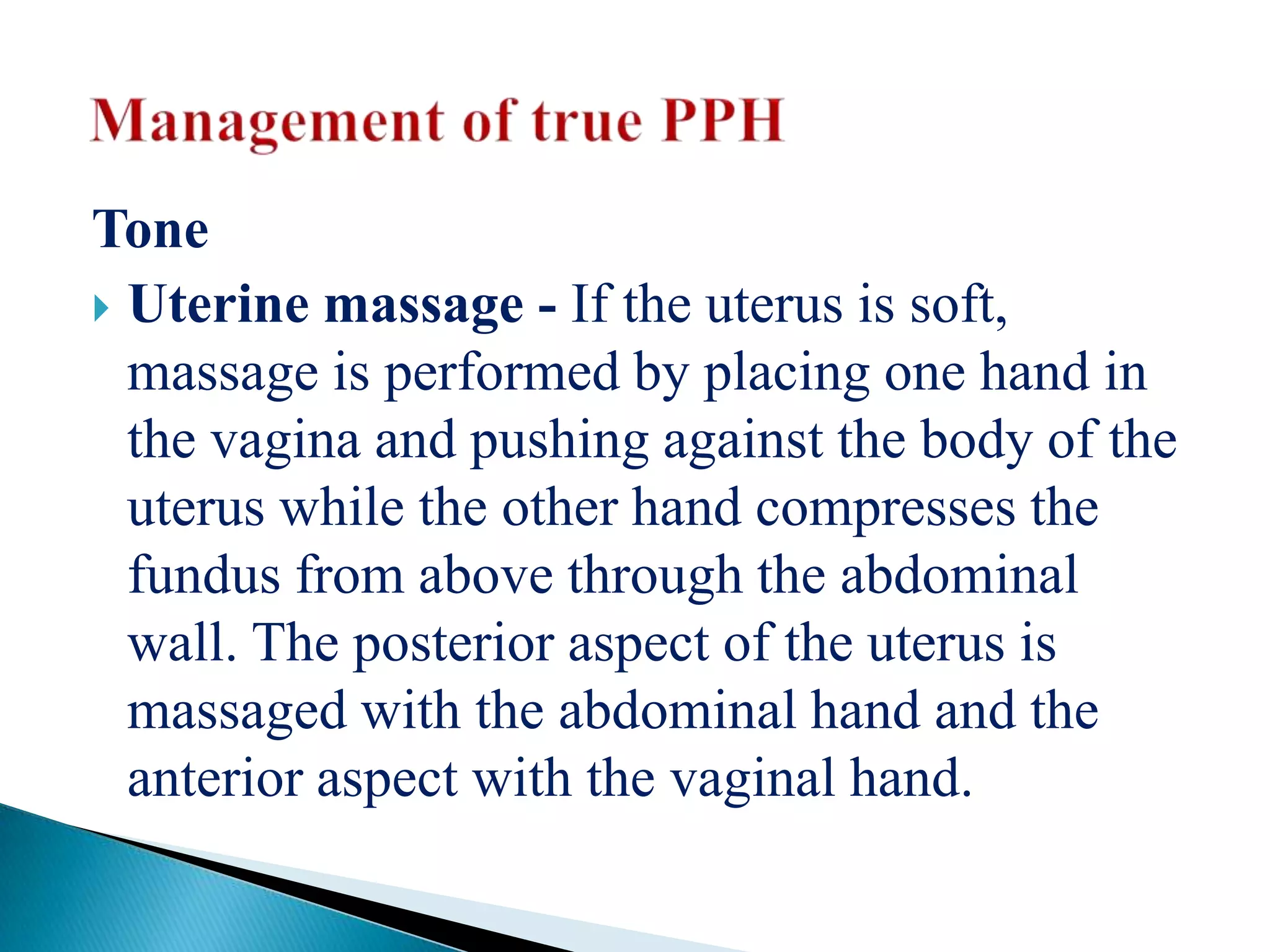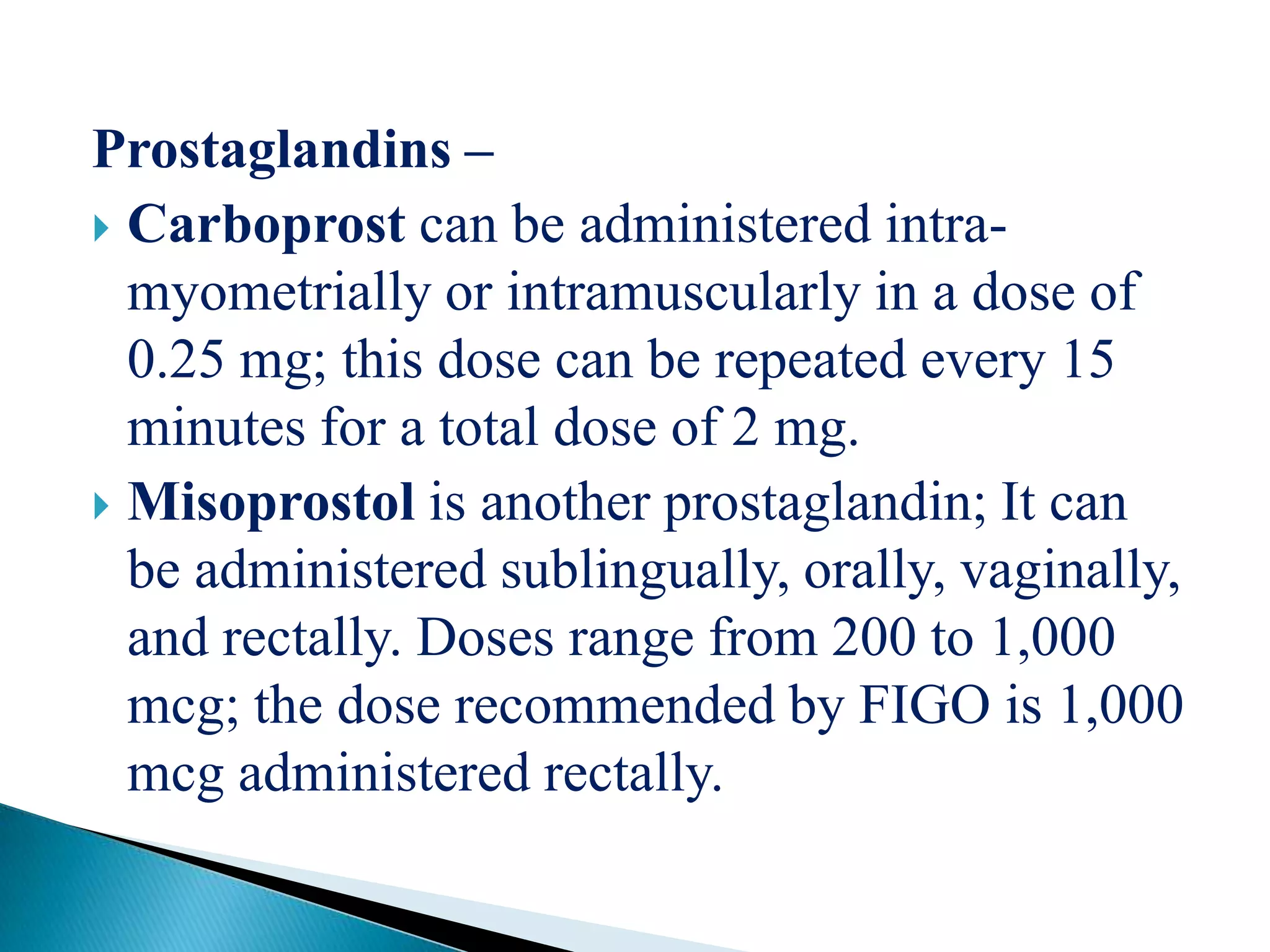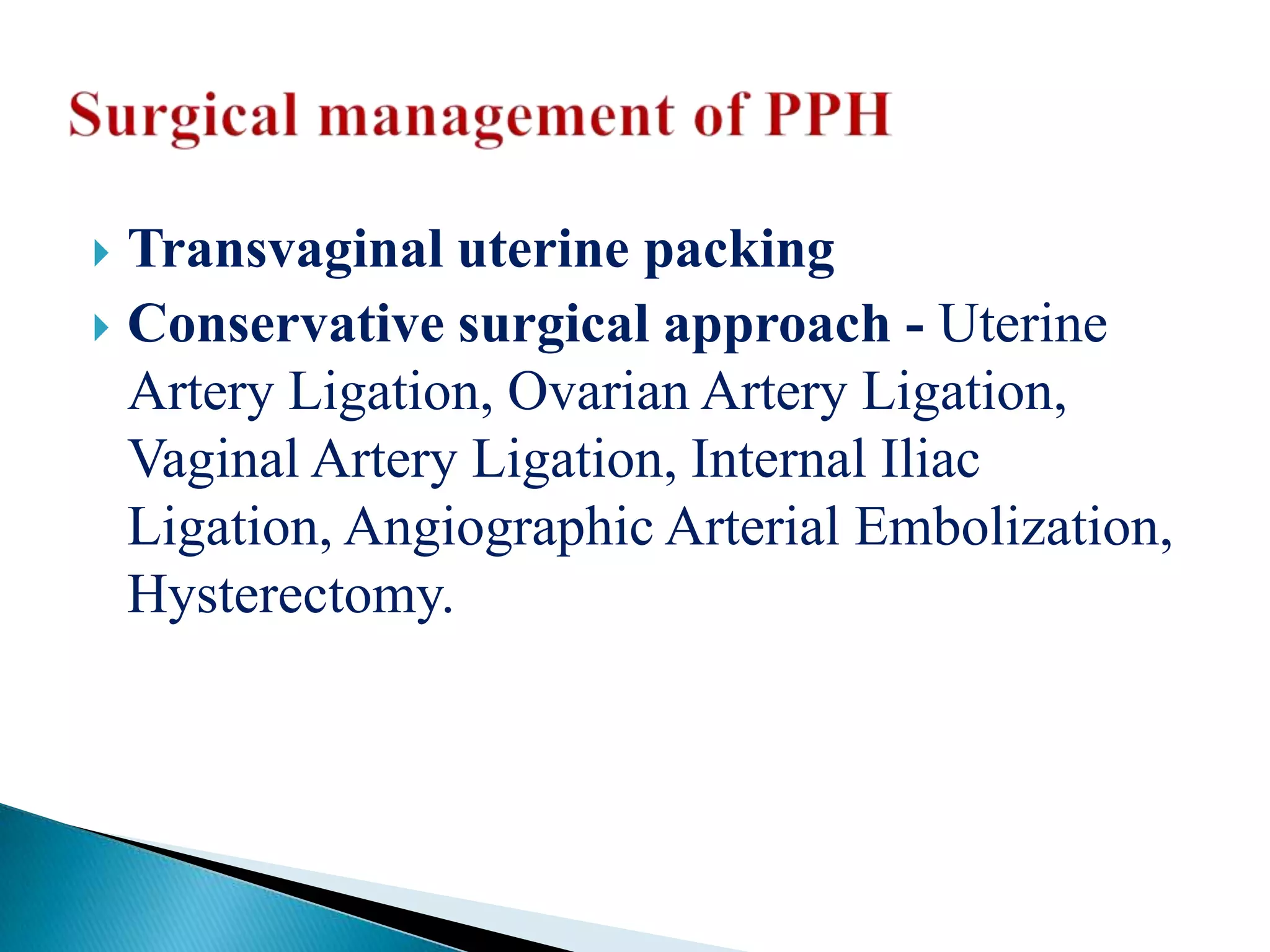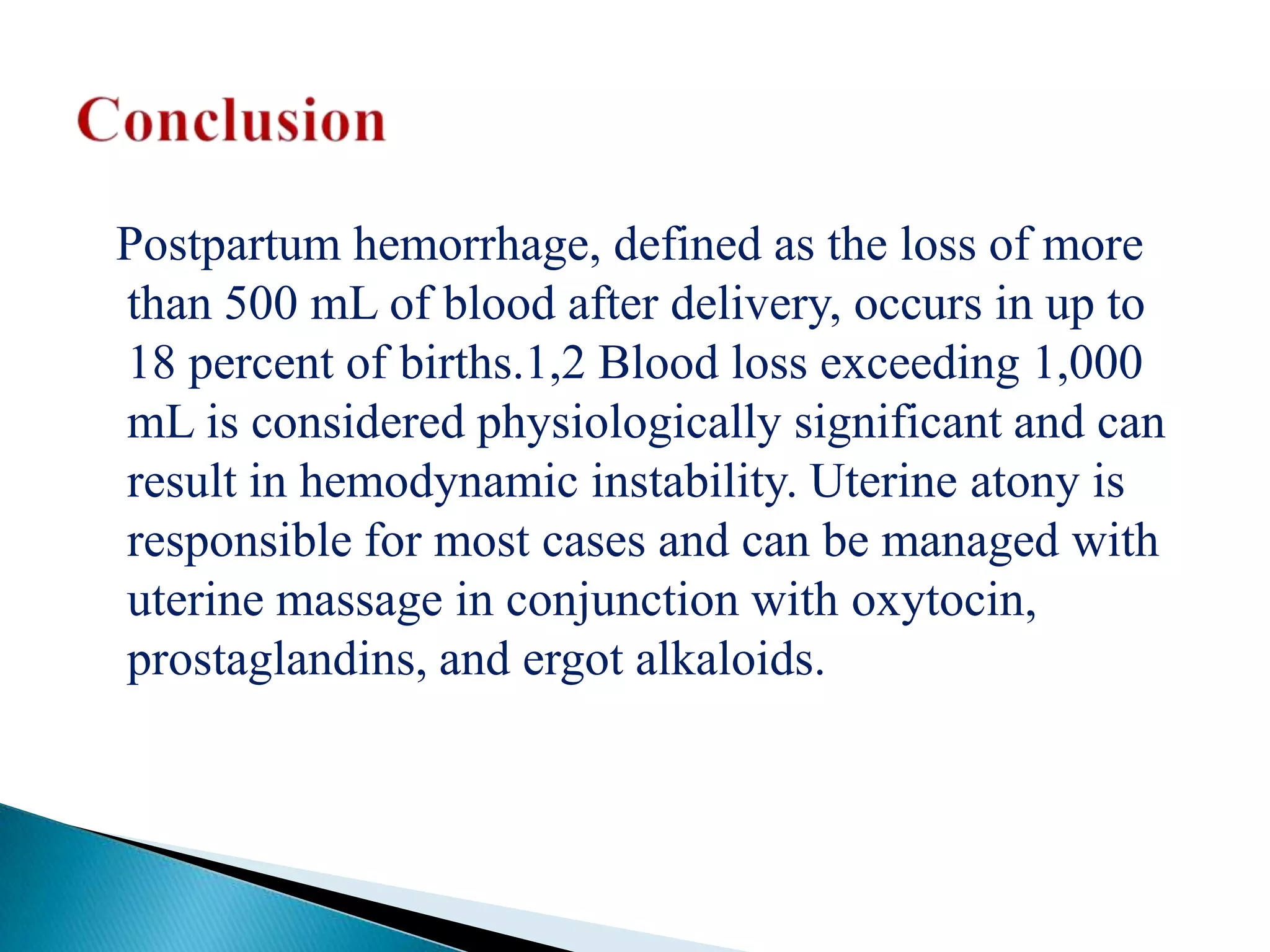Postpartum hemorrhage is a leading cause of maternal mortality, accounting for over 100,000 deaths per year globally. It is defined as blood loss exceeding 500 mL after delivery. The main causes are uterine atony, trauma, and retained placental tissue. Management involves uterine massage, uterotonic drugs like oxytocin and prostaglandins, repair of lacerations, and conservative surgical procedures if bleeding cannot be controlled. Significant blood loss can result in complications like shock and death.

